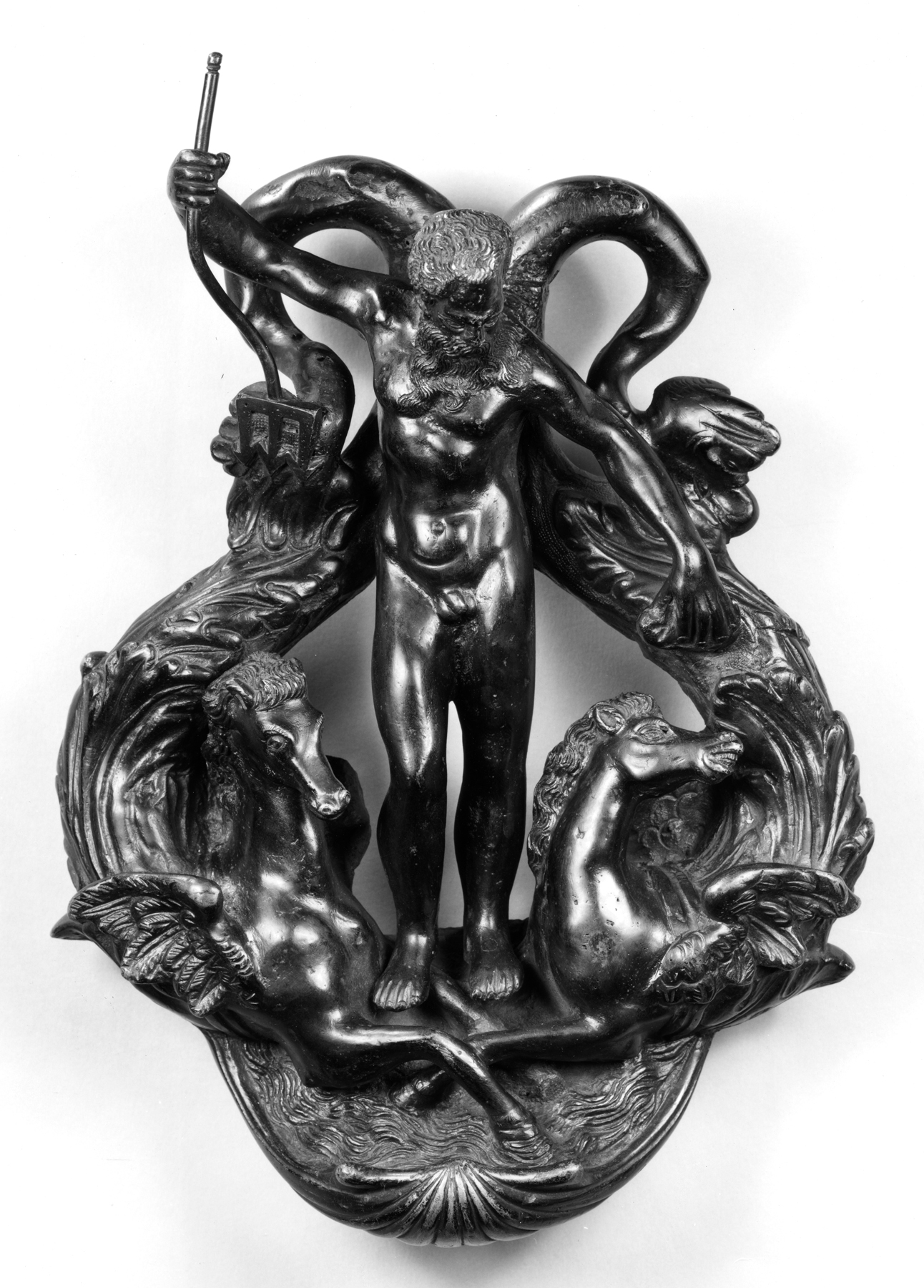Door Knocker with Neptune and Seahorses
(Renaissance Europe )
In Venice, with its great port, the Roman god Neptune, ruler of the oceans, was a popular motif for the decoration of everyday objects as well as elegant statuettes. The symmetrical, undulating forms of this knocker suggest Neptune's watery element and takes its shape from the flashing tails of his winged sea horses, the hippocamps, who draw his chariot.
Door knockers were generally crudely executed since they were produced in great numbers by a foundry. However, the model for this piece, of which there are many variants, must have been finely proportioned and crafted and has been attributed to the Venetian sculptor Alessandro Vittoria (1525-1608). There are related versions in the British Museum and the Harvard Art Museums.
Provenance
Provenance (from the French provenir, 'to come from/forth') is the chronology of the ownership, custody, or location of a historical object. Learn more about provenance at the Walters.
A. Seligmann, Rey and Co., New York [date and mode of acquisition unknown]; Samson [date and mode of acquisition unknown]; Henry Walters, Baltimore, 1917 [mode of acquisition unknown]; Walters Art Museum, 1931, by bequest.
Conservation
| Date | Description | Narrative |
|---|---|---|
| 1/9/1967 | Treatment | cleaned |
| 6/24/1977 | Treatment | cleaned |
Geographies
Italy, Venice (Place of Origin)
Measurements
H: 16 9/16 × L: 10 5/8 × D: 5 1/2 in. (42 × 27 × 14 cm)
Credit Line
Acquired by Henry Walters, 1917
Location in Museum
Accession Number
In libraries, galleries, museums, and archives, an accession number is a unique identifier assigned to each object in the collection.
In libraries, galleries, museums, and archives, an accession number is a unique identifier assigned to each object in the collection.
54.3




